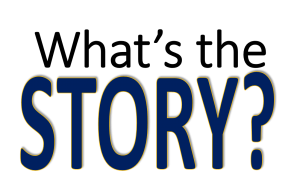 Many of us customer experience people are data heads. Former researchers, marketers or operations people, we use data to learnwhat customers want. Dashboards are one of our frequent tools, and I frequently get asked about them.
Many of us customer experience people are data heads. Former researchers, marketers or operations people, we use data to learnwhat customers want. Dashboards are one of our frequent tools, and I frequently get asked about them.
Dashboards are definitely important. A visual report on the current state of your customer experience can help drive action.
But dashboard can’t make people care.
We’ve all been in hour-long meetings walking through the numbers. I’ve seen 200 words on a slide, complicated graphs that I can’t read on-screen. All I remember from these meetings is how happy I was when they ended. It’s brutal. So why do we keep doing it?
Those who were lucky enough to attend David Shapiro’s session at the CXPA Insights Exchange learned a different approach. David still uses data to analyze and learn. But when he communicates, he uses stories, backed by the literal voice of the customer. He has access to recorded calls, and always has some at the ready to make his point. And it works.
It reminded me of a time when I was able to make a much bigger customer experience improvement than I ever expected.
I was creating a customer experience program in a division of a Fortune 50 company where literally nobody in marketing or product development had ever met a client.
I had the data to show that we were in trouble. Between our recent satisfaction study and our call center reports, I knew we were throwing money away in disengaged customers. Although this was in 2008, we had never sent a customer email. And the consistent message from our research and our calls was that this lack of communication frustrated customers, leading to the highest rate of customer attrition in the market. Something had to change.
Our marketing and especially product management teams needed the data to believe. But data alone wasn’t the answer. Instead, I turned to stories.
I created a state of the customer presentation with five major points. Each section began with the problem from a customer’s eyes, typically a quote, followed with data. Next came a clip from focus groups, some more data, and then ending with a customer story or an audio clip from a call.
The change was intense and immediate. The CEO signed off on the email communications program, and we were live in only three months. Luckily, customer response was beyond all expectations, and even resulted in a surprising level of new sales.
We all have our stories of customer-focused change. As our VP of sales told me, “You know, this customer stuff works!” But the data wasn’t enough – it took stories to get him onboard. I knew my story-telling was working when he started telling me the stories from my presentation!
You have this same power. Maybe you don’t have recorded calls at the ready like David does. But you likely have focus group recordings you can use. If not, grab a video camera and talk to your customers. And the next time you have to build a presentation, use these stories. Your impact will be much higher than relying just on data.



